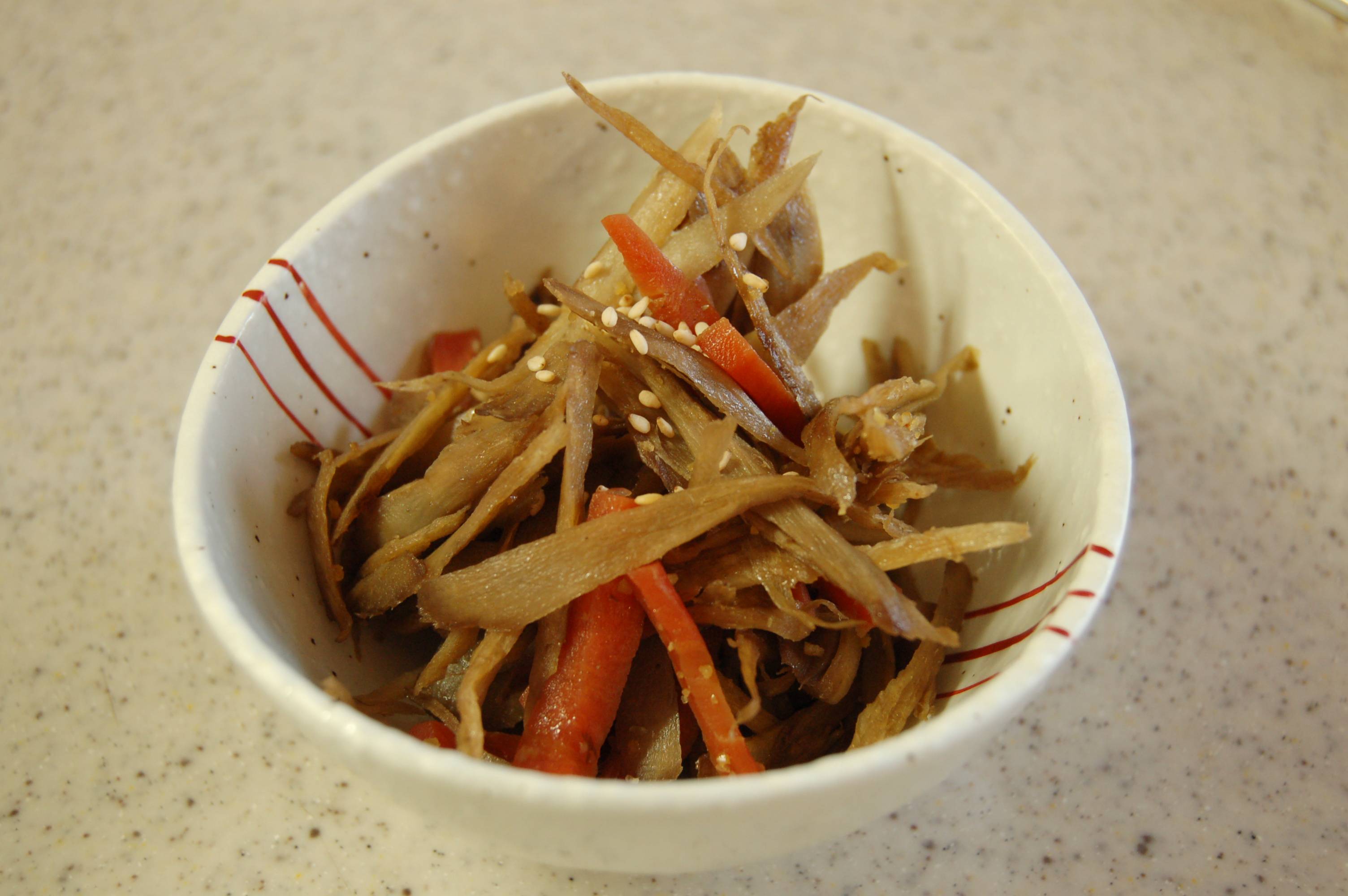Like many vegetables in Japan, gobō (burdock root) most likely arrived from China during the Heian Period (794-1185). It was originally consumed as an herb with its leaves steeped to make a tea-like beverage and was prized for its diuretic and anti-inflammatory properties.
Gobō’s shift to culinary use came about during the Edo Period (1603-1868), when improved agricultural practices aided the development of more tender, pleasantly aromatic varietals. Because gobō roots grow long and deep into the earth, it was believed to be a metaphor for building strong ties within the family — probably one of the reasons gobō is included in osechi ryōri, the special dishes eaten when family members gather to celebrate the new year.
The most popular dish featuring gobō is kinpira, a quickly assembled stir-fry. The classic version is made with thin slivers of gobō and carrots, and finished with shichimi tōgarashi, a fiery blend of seven spices. Named after a folk hero who was much admired for his boldness, this dish frequently appears tucked into bento, as a side on family dinner tables and on the menu at pubs and other casual eateries.



